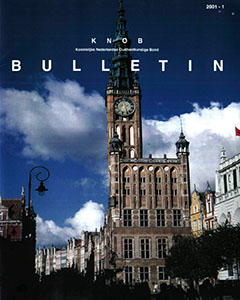Indexering ESCI / Scopus


Inleiding bij het themanummer (Koen Ottenheym). Petra Sophia Zimmermann: Hans Vredeman de Vries - ein 'uomo universale'? Krzysztof Gronowicz: The Pictures of Hans Vredeman de Vries in the Council's Grand Chamber of the Main City Town Hall in Gdansk. Christopher Heuer: Between the Histories of Art and Architecture: Critical Reception of Hans Vredeman de Vries.
How is the artist Hans Vredeman de Vries to be characterized? Departing from the works of his comprehensive oeuvre that were passed down to us, this question was answered in various ways in art-historiography. Autobiographical statements of Vredeman himself will have to be brought in so as to make clear how he saw himself and what goal in life he pursued.
Within his immense output of graphic work only five books comprise views of his own: on the one hand they are his books of columns from the years 1565 and 1578, in which Vredeman proposes ornamental variants for the five orders,...
Hans Vredeman arrived in Gdansk in 1592. He was commissioned by the City Council as the architect of fortifications. On October 1, 1592, Vredeman signed a one-year contract' as the city architect. His task was to build fortifications at the mouth of the Vistula River - Wisloujscie and the Motlawa. A year later it was Anton van Obbergen's project that was approved; Vredeman was dismissed.
In 1594 the Council commissioned him to paint Orpheus among beasts for the Court of Artus. The picture did not survive. We know that it hung on the south-western wall of the...
As an itinerant draughtsman, fortifications engineer, painter, and rhetorician, Hans Vredeman de Vries has never fit smoothly into 19th and 20th century historical narratives that insist upon the idea of ‘national schools’. The separation contemporary historians have often unwittingly placed between Vredeman’s work as a graphic designer and as an architect seems inconsistent with the reality of the sixteenth century, and is often predicated upon stylistic and periodic designations defined by the Italian Renaissance.
This essay's survey of historiography on Vredeman reveals a...


open access mogelijk gemaakt door Stichting OpenAccess
